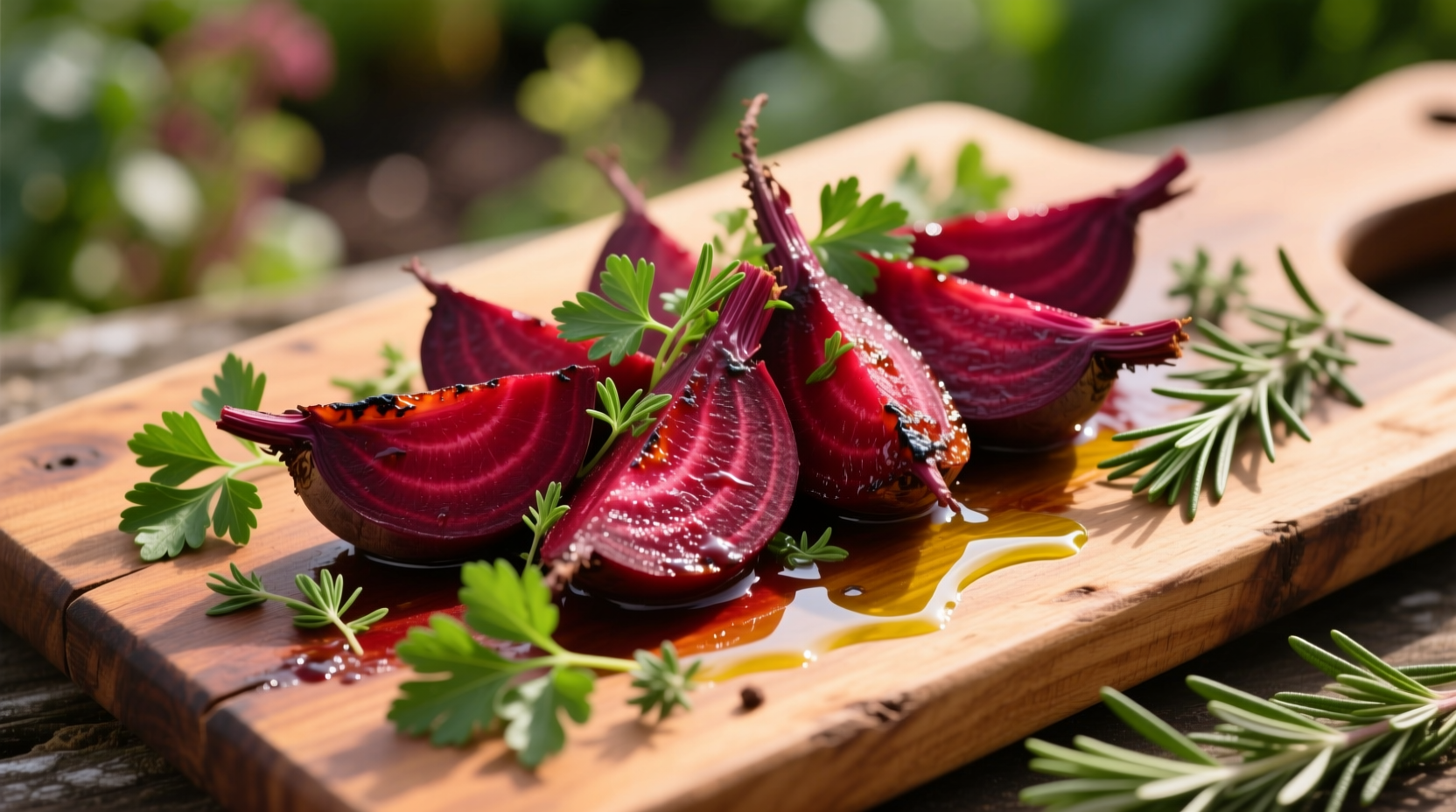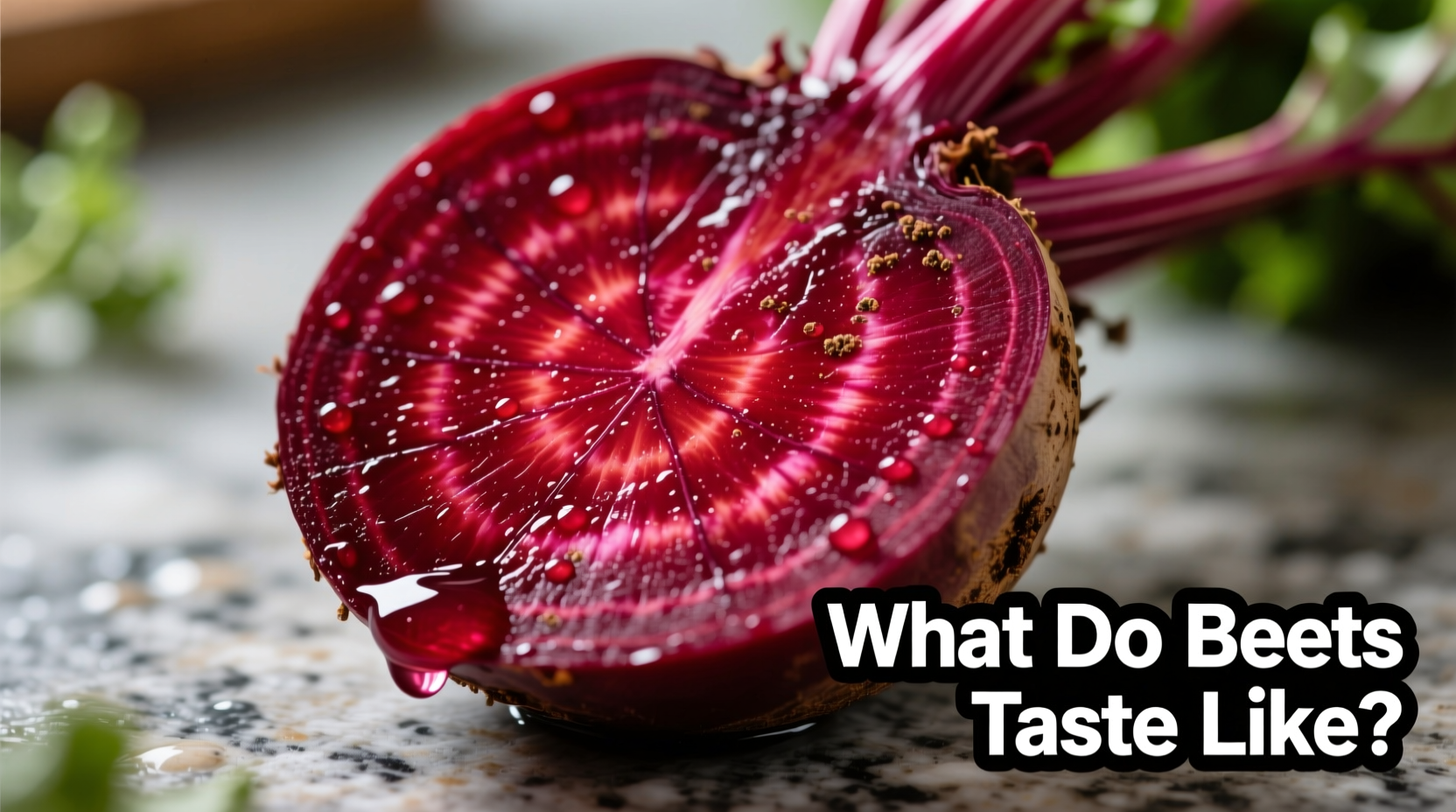Your Complete Guide to Understanding Beet Flavor
Discover exactly what beets taste like and whether you'll enjoy them based on your current palate preferences. This guide breaks down the complex flavor profile of beets, how preparation methods transform their taste, and practical tips for enjoying them whether you're a first-time beet eater or looking to expand your culinary repertoire.
The Core Flavor Profile: What Makes Beets Unique
Beets possess a distinctive combination of taste elements that set them apart from other vegetables. Understanding these components helps explain why some people love beets while others find them challenging.
The primary flavor compounds in beets include:
- Earthy notes from geosmin (the same compound that creates the smell of rain on dry soil)
- Natural sweetness (beets contain about 8-10% sugar by weight, similar to carrots)
- Subtle bitterness concentrated in the skin and near the root end
- Mineral-like qualities reflecting their nutrient-dense composition
When you bite into a raw beet, you'll experience a crisp texture with immediate sweetness followed by that characteristic earthiness. Cooked beets develop more complex caramelized flavors while maintaining their fundamental sweet-earthy balance.
| Vegetable | Sweetness Level | Earthy Notes | Texture (Raw) | Best Cooking Method |
|---|---|---|---|---|
| Beets | High (8-10% sugar) | Very pronounced | Crisp, dense | Roasting, steaming |
| Carrots | High (6-8% sugar) | Mild | Crisp, fibrous | Roasting, raw |
| Radishes | Low | None | Crisp, juicy | Raw, pickled |
| Turnips | Moderate | Moderate | Firm, slightly woody | Roasting, mashing |
How Preparation Methods Transform Beet Flavor
Your cooking technique dramatically affects how beets taste. Understanding these transformations helps you choose the best preparation method for your palate preferences.
Raw Beets: Fresh and Vibrant
When grated or thinly sliced raw, beets offer:
- Crisp, almost apple-like texture
- Immediate sweetness with subtle earthiness
- Refreshing quality perfect for salads
Raw preparation preserves the highest vitamin content but showcases beets' earthy notes most prominently. If you're new to beets, try them raw in a salad with citrus dressing to balance the earthiness.
Roasted Beets: Deep and Complex
Roasting transforms beets through caramelization:
- Concentrates natural sugars, enhancing sweetness
- Mellows earthy notes while developing rich umami flavors
- Creates tender texture with slightly crispy edges
Professional chefs like Antonio Rodriguez recommend roasting beets at 400°F (200°C) with a splash of balsamic vinegar to balance earthiness with acidity. This method makes beets significantly more approachable for those who find their raw flavor challenging.

Boiled or Steamed Beets: Mild and Versatile
Water-based cooking methods produce:
- Milder earthy flavor compared to raw
- Uniform tender texture throughout
- Slightly less sweet than roasted preparation
Steaming preserves more nutrients than boiling while maintaining flavor integrity. This method works well when you plan to use beets in recipes where their flavor shouldn't dominate.
Factors That Influence Beet Taste Experience
Several elements affect how beets taste to you personally. Understanding these context boundaries helps set realistic expectations.
Beet Variety Matters
Not all beets taste identical. Different varieties offer distinct flavor profiles:
- Red beets (most common): Strongest earthy notes, classic sweet-earthy balance
- Golden beets: Milder earthiness, more pronounced sweetness, less likely to stain
- Chioggia beets (candy stripe): Similar to red beets but slightly sweeter with less earthiness
- White beets: Mildest flavor profile, almost no earthiness, primarily sweet
If you've had negative experiences with red beets, trying golden or white varieties might change your perception completely.
Seasonal and Freshness Factors
Freshness significantly impacts beet flavor:
- Freshly harvested beets (in season during fall and winter) taste sweeter
- Older or improperly stored beets develop stronger earthy notes
- Smaller beets tend to be more tender and less earthy than larger specimens
According to agricultural research from the USDA Vegetable Laboratory, beets stored at 32°F (0°C) with high humidity maintain optimal flavor for up to 14 days. USDA studies show that proper storage preserves sugar content while minimizing earthy compound development.
Flavor Pairings That Enhance Beet Taste
Certain ingredients naturally complement and balance beet flavors, making them more enjoyable:
- Acidic elements: Citrus juice, vinegar, or yogurt cut through earthiness
- Sweet enhancers: Orange segments, apples, or pomegranate seeds amplify natural sweetness
- Creamy components: Goat cheese, feta, or avocado provide textural contrast
- Herbal accents: Dill, mint, or basil add freshness that balances earthiness
When exploring what do beets taste like in different culinary contexts, consider these classic combinations that have stood the test of time across various food cultures.
Common Misconceptions About Beet Flavor
Several myths persist about beet taste that may be influencing your expectations:
- "Beets taste like dirt" - While geosmin creates an earthy note, properly prepared beets offer complex sweet flavors that dominate when cooked correctly
- "All beets taste the same" - Different varieties have significantly different flavor profiles
- "Beets are always earthy" - Cooking methods dramatically reduce earthiness while enhancing sweetness
- "If you dislike raw beets, you'll hate all preparations" - Many people who dislike raw beets enjoy roasted or pickled versions
Food science research published in the Journal of Agricultural and Food Chemistry confirms that roasting beets reduces geosmin concentration by up to 40% while increasing perceived sweetness through caramelization reactions. This scientific evidence explains why preparation method makes such a dramatic difference in beet flavor perception.
Making Beets Work for Your Palate
Whether you're new to beets or looking to appreciate them more, these practical strategies help you enjoy their unique flavor:
- Start with golden or white beets if you're sensitive to earthy flavors
- Always pair with acid (lemon juice or vinegar) to balance earthiness
- Try roasted beets before raw for a more approachable flavor profile
- Begin with small amounts in mixed dishes before trying beets as a main component
- Experiment with pickled beets, which transform the flavor profile through fermentation
Understanding what do beets taste like across different preparations empowers you to find preparation methods that align with your personal taste preferences. The key is recognizing that "beet flavor" isn't monolithic—it transforms dramatically based on variety, freshness, and cooking technique.











 浙公网安备
33010002000092号
浙公网安备
33010002000092号 浙B2-20120091-4
浙B2-20120091-4